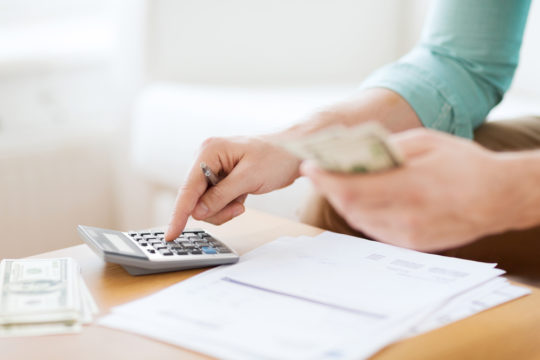Saving is an act of commission. It doesn’t happen by accident—you must actively work towards it. If you find it difficult to meet your savings goals, you’re not alone. Try these savings tips. Before you know it, you’ll have that vacation you know you deserve.
Saving
1. Make Saving Automatic
We’ve stepped far into the digital age where direct deposit is commonplace. Enroll in direct deposit with your employer and set a percentage of your paycheck to be automatically deposited into savings, even if it is a mere 2%—it adds up faster than you might think.
2. Have a Separate Savings Account
Choose to have a savings account with a different bank than your primary checking account. This will keep you from having access to your savings account on impulse.
3. Create Separate Bank Accounts
Create separate bank accounts named with various savings goals. Some excellent examples include “Vacation Fund” or “New Car Fund”. When you have a different savings accounts associated with your financial goals, it becomes easier to measure your progress and stay motivated.
4. Save Your Loose Change
Keep your spare change in a jar or coffee can. This may sound a bit outdated. However, it provides an excellent way to have emergency funds on hand. Plus, when the jar gets full, you can deposit it in one your separate savings accounts called “Emergency Fund.” It’s imperative that you have some money set aside for when the need arises.
5. Avoid Overdraft and Bounced Check Fees
Banks charge exorbitant fees for bounced checks and over-drafting your account for a good reason. This charge is intended to teach you sound money practices. The money you save on these fees is better spent elsewhere, like your “Vacation Fund” savings account.
Spending
6. Pay with Cash
Don’t use your debit or credit card for daily expenses. When you get paid, take out a small portion of it in cash, and limit your spending to the amount you pulled out. Think of it as an allowance. This provides an excellent method of living within your means.
7. Track Your Expenses
This is easier said than done. At the beginning of next month, make it a point to save each and every receipt. This allows you to see where your money goes every month. I can’t name the sheer amount of people who spend carelessly, asking themselves where their money goes every month. You may be shocked to find out your $4 latte every weekday morning can add up to $80 per month on daily coffee.
Once the results are gathered, find ways to save money with minimal sacrifice. In the coffee example, you can purchase a quality coffee maker, filters, coffee, creamer, and sugar for the entire month and not spend more than $50. The difference can be saved, and you’ll still get your coffee.
8. Never Purchase Items on Impulse
Do you know why stores offer free shopping carts? Can you imagine how much you would buy in one trip if they didn’t offer them? People would buy less. How many times have you waltzed into a supermarket or grocery store with a budget of $30 and find that you filled the cart with over $150 in purchases because you felt you needed it right then and there?
Whether this scenario sounds familiar, it happens much more often than it might seem. In the grocery store, take a look and notice how it’s arranged. There’s a reason that staple purchases, like milk and eggs, are in the back of the store. You have to walk past hundreds of other items you might not need just to get what you do need. Stick to the outside border of the store—this is called the ‘racetrack’ in retail because the inner aisles contain items that aren’t considered food staples or necessities.
9. Only Use Your Bank’s ATM
Every time you use an ATM that belongs to a bank other than the one you’re pulling money out, you’re double charged. Ever notice how you go to pull out $20 and the charge on your statement says $22.50, plus another $2.50 charge from your bank for using the ATM? That’s $5 that can easily be saved. Half the money went to your bank, and the other half went to the owner of the ATM. You can avoid this altogether by going to an ATM owned by your bank.
10. Pay Your Credit Card On Time
Possession of a credit card is a privilege, not a right. They are granted to people who demonstrate responsible spending and saving practices. They are not entrusted to persons who don’t pay their bills or otherwise have poor financial management practices. If you don’t pay your credit card bill on time, it goes against you on your credit reports.
Furthermore, the money you end up spending on late fees includes money that is much better spent elsewhere, like towards one of the goals you made earlier when you created separate savings accounts.
Conclusion
I have the perfect plan for getting out of debt and staying there. In theory, it’s very straightforward. Evidence shows that it is much harder to practice. Ready for it? It’s called “If you can’t afford it, don’t buy it.” Taking responsibility for financial habits proves to be a tough pill to swallow for many people. However, it’s necessary. Once done, you can start working your way towards your financial goals and ultimately financial freedom. It is very possible.
Avoid unnecessary expenses. It’s better to have money and not need it than it is to need money and not have it.

